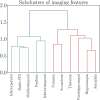The maternal brain: Region-specific patterns of brain aging are traceable decades after childbirth
- PMID: 32767637
- PMCID: PMC7555081
- DOI: 10.1002/hbm.25152
The maternal brain: Region-specific patterns of brain aging are traceable decades after childbirth
Abstract
Pregnancy involves maternal brain adaptations, but little is known about how parity influences women's brain aging trajectories later in life. In this study, we replicated previous findings showing less apparent brain aging in women with a history of childbirths, and identified regional brain aging patterns linked to parity in 19,787 middle- and older-aged women. Using novel applications of brain-age prediction methods, we found that a higher number of previous childbirths were linked to less apparent brain aging in striatal and limbic regions. The strongest effect was found in the accumbens-a key region in the mesolimbic reward system, which plays an important role in maternal behavior. While only prospective longitudinal studies would be conclusive, our findings indicate that subcortical brain modulations during pregnancy and postpartum may be traceable decades after childbirth.
Keywords: brain-age prediction; maternal brain aging; neuroimaging; parity.
© 2020 The Authors. Human Brain Mapping published by Wiley Periodicals LLC.
Figures





References
-
- Barha, C. K. , & Galea, L. A. (2010). Influence of different estrogens on neuroplasticity and cognition in the hippocampus. Biochimica et Biophysica Acta (BBA)‐General Subjects, 1800, 1056–1067. - PubMed
-
- Barha, C. K. , & Galea, L. A. (2011). Motherhood alters the cellular response to estrogens in the hippocampus later in life. Neurobiology of Aging, 32, 2091–2095. - PubMed
-
- Barha, C. K. , & Galea, L. A. (2017). The maternal “baby brain” revisited. Nature Neuroscience, 20, 134–135. - PubMed
Publication types
MeSH terms
Grants and funding
LinkOut - more resources
Full Text Sources
Medical

